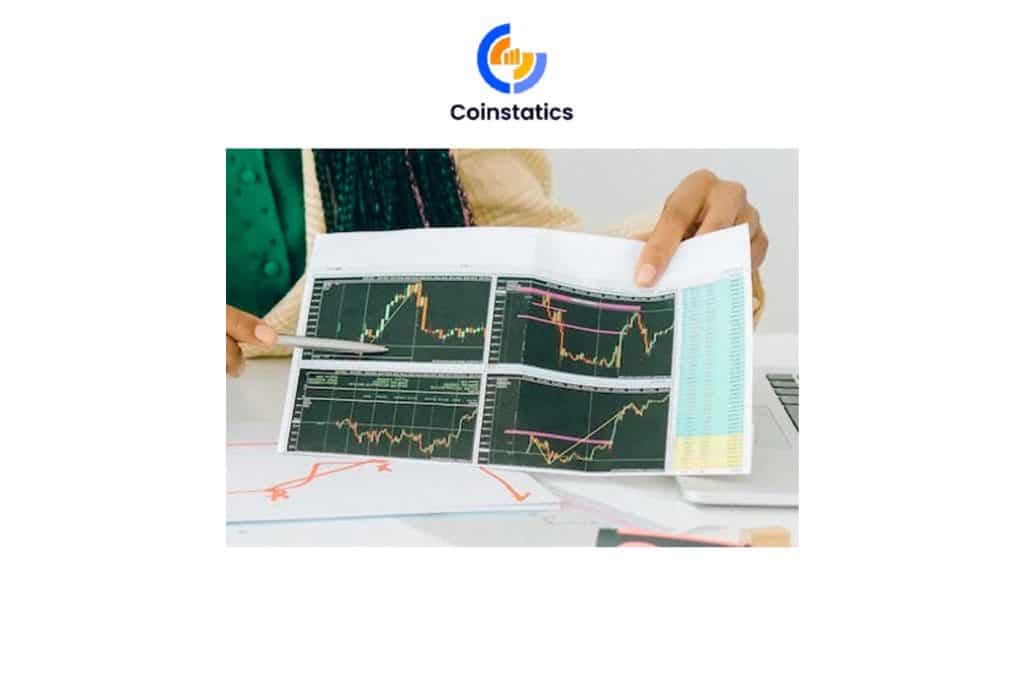This article was last updated on January 31, 2023
The behavior of currency values in the foreign exchange market can be analyzed and deciphered by traders using the patterns found in forex charts. When determining when to enter or exit transactions, traders can use these patterns to get significant insight into trends and anticipated market moves. Beginners and experienced traders alike can employ a variety of forex chart patterns, such as the head and shoulders, triangle, and flag patterns. A crucial skill for profitable forex trading is the ability to comprehend and spot these patterns.
Table of contents
Introduction to Forex Chart Patterns
Forex chart patterns are technical analysis tools used to identify trading opportunities in the currency exchange market. Chart patterns provide traders with increased accuracy when forecasting future price direction. By learning the visual cues of these patterns, investors can make better informed decisions when trading foreign exchange. In this article, we will provide an introduction to the three of the most commonly used Forex chart patterns – reversal patterns, continuation patterns and rectangle patterns.
Reversal patterns are used to indicate that a current trend is coming to an end and that a new trend in the opposite direction is likely to occur. These patterns include head and shoulders, double and triple tops and bottoms, and wedges. The head and shoulders pattern, for example, is formed when a currency’s price reaches a peak and then declines, reaches a second, lower peak and then declines again, before reaching a final peak that is similar to the first peak. This pattern is often seen as a sign that the currency’s price will fall in the future.
Continuation patterns, on the other hand, are used to indicate that a current trend will continue. These patterns include flags, pennants, and triangles. For example, the flag pattern is formed when a currency’s price rises or falls rapidly and then enters a period of consolidation, creating a pattern that resembles a flag. This pattern is often seen as a sign that the currency’s price will continue to rise or fall in the future.
Lastly, rectangle patterns are used to indicate that a currency’s price is likely to move in a range-bound or horizontal direction. These patterns are formed when the price of a currency moves within a defined range, creating a pattern that resembles a rectangle. This pattern is often seen as a sign that the currency’s price will remain within a certain range for a period of time.
It’s worth noting that chart patterns are not guaranteed to predict future movements, they are used as a tool in conjunction with other forms of technical and fundamental analysis. Additionally, it’s important to be aware of different market conditions, such as volatility and liquidity, which can affect the reliability of chart patterns.
Identifying Reversal Patterns
Identifying reversal patterns in the forex market can be a valuable tool for traders looking to make informed decisions about when to enter or exit trades. Reversal patterns, such as the double top and double bottom, head and shoulders, and triangle formation, can indicate a change in market direction.
Traders should be aware of additional reversal patterns, such as the double bottom, which is produced when a currency’s price hits a low, rebounds back up, and then hits that same low again before rising. These patterns include the double top and head and shoulders patterns. This pattern is frequently seen as a prediction of future price increases in the currency.
The triangle formation, which can arise following a protracted uptrend or decline, is another significant reversal pattern. Two converging lines are created by a series of highs and lows, and this pattern is sometimes interpreted as a sign that a trend is losing steam and may be about to reverse. Additionally, traders should be aware that there are other triangle forms, including ascending and falling triangles, which signify various possible outcomes.
Reversal patterns work best when combined with other technical analysis tools like trend lines, moving averages, and indicators, as well as fundamental research tools like economic data and current events, as they are not always a reliable signal of a trend reversal. The market’s volume and volatility should also be taken into consideration by traders because they have an impact on the accuracy of reversal patterns.
Trading Continuation Patterns
Continuation patterns are chart formations that indicate that the existing trend is likely to resume. Common continuation patterns include the ascending and descending triangles, wedge formations and flag patterns.
The ascending and descending triangles are used to indicate that a trend is likely to resume. This formation will appear after a prolonged uptrend or downtrend. These patterns are characterized by two converging lines in which one line is rising and the other is falling.
The wedge formation appears after a prolonged uptrend or downtrend. This pattern indicates that the current trend may be continuing. This pattern is characterized by two converging lines in which both lines are rising or falling in the same direction.
The flag pattern appears after a prolonged uptrend or downtrend. This pattern is used to confirm that the current trend is likely to continue. This pattern is characterized by a short-term consolidation period during which time the prices fluctuate in a narrow range with a series of higher highs and higher lows.
The Pennant pattern, which resembles a little symmetrical triangle, is another continuation pattern that traders should be aware of. It develops when a currency’s price surges quickly in one direction and then enters a period of consolidation. This pattern is frequently seen as a signal that the price of the currency will keep moving in the same direction.
Ascending and descending triangles are examples of continuation patterns that can both signal a potential trend continuance and a potential trend reversal. This is an important point to remember. To make a better informed choice, traders must pay close attention to the pattern’s shape and the general state of the market.
In conclusion, traders can use continuation patterns as useful tools to spot possible market trends and decide whether to enter or leave deals. However, it’s crucial to combine them with additional technical and fundamental analysis methods, as well as to pay attention to the market’s activity and volatility.
Analyzing Rectangle Patterns
Rectangle patterns are chart formations that indicate that a trend may be ready to reverse. Common rectangle patterns include the symmetrical and ascending/descending rectangles.
The symmetrical rectangle pattern appears after a prolonged uptrend or downtrend. This pattern indicates that the current trend may be ready to reverse. This pattern is characterized by two parallel lines in which price swings between the two lines.
The ascending and descending rectangle pattern appears after a prolonged uptrend or downtrend. This pattern is used to signal that the current trend may be ready to reverse. This pattern is characterized by two converging lines in which one line is rising and the other is falling.
Rectangle patterns, like other chart patterns, should be utilized in conjunction with other methods of technical and fundamental analysis because they are not always indicative of a trend reversal. The market’s volume and volatility should also be taken into consideration by traders because they have an impact on the accuracy of rectangle patterns.
The length of the consolidation period is an important consideration while examining rectangle patterns. In general, a rectangle pattern that develops over a longer time span is thought to be more dependable than one that does so quickly.
Furthermore, it’s crucial to keep in mind that some rectangle patterns, such as ascending and descending rectangles, might point to a potential trend reversal, whereas others, such as symmetrical rectangles, can point to a potential trend continuation. To make a better informed choice, traders should pay close attention to the pattern’s shape and the general state of the market.
In conclusion, traders can use rectangle patterns as a useful tool to spot prospective market trends and decide whether to enter or leave deals. However, it’s crucial to combine them with other types of technical and fundamental research, pay attention to the market’s volume and volatility, and take the length of the consolidation period into account while examining the pattern.
Conclusion
Beginners can start analyzing market movements and acquire insights into anticipated future price fluctuations by studying forex chart patterns. Chart patterns should be utilized for trading, but it’s vital to remember that they shouldn’t be the only method used; rather, they should be combined with other types of technical and fundamental analysis.
Additionally, it’s crucial to keep in mind that markets are dynamic and that chart patterns can be affected by a variety of factors, including economic data, geopolitical events, market sentiment, and market sentiment, among others. For this reason, it’s always crucial to keep up with the most recent news and events that could have an impact on the market.
Beginners should also be aware that not all chart patterns are created equal, that certain patterns are more dependable than others, and that in order to make an informed choice, it is crucial to comprehend the pattern’s shape and the broader market environment.
Another important rule of thumb is to exercise restraint and patience and avoid acting on each and every indication that a chart pattern generates. In order to prevent losses and safeguard their capital, traders need also apply risk management techniques including stop-loss orders and position sizing.
In conclusion, forex chart patterns can be a useful tool for new traders to comprehend and analyze the market. However, it’s crucial to combine them with other types of technical and fundamental analysis, stay current with current events, exercise patience and discipline, and use risk management techniques to safeguard their capital.
Related: Forex Scalping Explained





